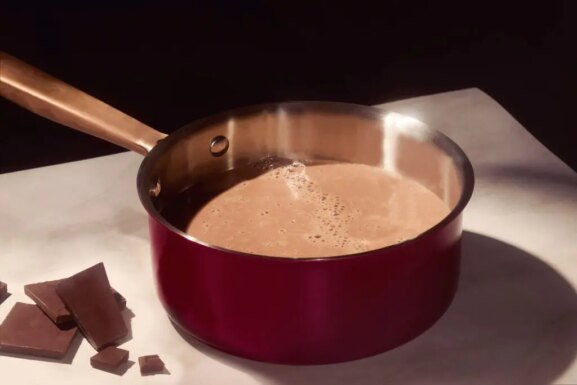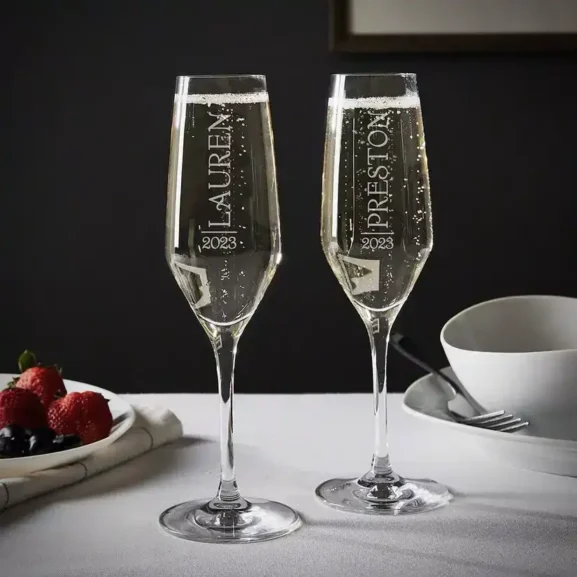What Is a Rocks Glass?
At first glance, there doesn’t seem to be much to the humble rocks glass (also known as an Old Fashioned glass)—cylindrical, clear, bigger than a shot glass, smaller than a Collins, none of the elegant swoop of a classic coupe or the immediately iconic V-shape of James Bond’s martini glass. It’s low and workmanlike, the pint glass of the mixology set.
But consider for a moment that the rocks glass, for all its seemingly pedestrian shape, is among the most used glasses at the bar. And now imagine how much can go wrong if your rocks glass is too small (you’ll be wearing your margarita down your shirt front), too large (your $12 pour of rye will look paltry), too narrow (you’ll hit your nose on the ice cubes), or badly shaped (part of your cocktail will get trapped under the ice at the bottom of your glass).
“If you think on mass scale—truly large, less the bespoke cocktail made by mixologists at a beautiful bar and really about what’s in regular usage—the rocks glass has to be at the top,” says Sean Josephs, cofounder and master blender of Pinhook Bourbon and rocks glass partisan.
“By far the most popular Bourbon cocktail is an Old Fashioned, and it comes in what seems like the most basic glass and that makes me appreciate the rocks glass for its simplicity.”
To drink our way to the bottom of the rocks glass, we asked around to find out what makes for a good one, what to watch out for when you’re drinking from one and all the factors a noted glassware designer took into account when he designed his own for Riedel.
What Is a Rocks Glass?
A rocks glass is meant to hold liquor or a cocktail with only a few ingredients, over ice. Though rocks glasses can vary somewhat in size, they hover around 10 ounces and should be able to hold two-by-two-inch ice cubes.
You’ll often hear the rocks glass referred to as the Old Fashioned glass, thanks to the popularity of the classic cocktail, or a lowball glass. They’re all essentially the same thing. As for where the glass gets its name, that has to do with the “rocks” of ice that old time barkeeps would chip off an ice block with a pick.
As the name suggests, it’s the ice that makes or breaks a rocks glass. Today, we contend mainly with cubes, but whether you’re dealing with those large spheres you get in a hip bar or whatever you pull out of your freezer, a rocks glass needs to be big enough to comfortably hold your whiskey smash and ice while allowing space for the ice to melt and the drink to dilute.
Haven’t I Seen a Tiny Rocks Glass?
That’s probably a neat glass, usually the same shape as a rocks glass, but designed not for the two or 2 ½ oz pours you get from either a Scotch on the rocks or a cocktail, but for a 1 ½ ounce neat pour. The glass is smaller so that the smaller amount of liquid still looks proportional and because there’s no need to accommodate ice.
A little bit of cocktail trivia: the Sazerac is perhaps the only neat cocktail often served in a rocks glass. You may also find the odd bartender who will serve it in a neat glass as well.
What About a Double Rocks Glass?
Yup, that’s a bigger rocks glass, though not, as the name suggests, twice the size of a single rocks glass but twice the size of a pour. A standard rocks glass tends to be about 10 ounces. A double rocks glass will range from 12 to 14 ounces. You’re more likely to see tiki cocktails—with their plethora of ingredients, garnishes and pebbled ice—served in double rocks glasses than single. Same goes for drinks with large, hand-cut ice.
What’s the History?
The rocks glass is a tumbler, one of the many flat-bottomed vessels that include glasses like the highball, the Collins, a juice glass, a shot glass and even a water glass. A distant ancestor of the rocks glass was the quaich (pronounced “quake”), a short wooden drinking bowl with handles meant for drinking alcohol and dating back at least 500 years to the British Isles.
Though the rocks glass has morphed in shape and materials over the centuries, the fundamental idea–a low, heavy-bottomed glass that won’t readily tip over in a bumptious pub, remains the same.
What Should I Look for in a Rocks Glass?
To answer this question broadly, I turned to Josephs. And then to answer it specifically, I leaned on restaurant consultant, spirits expert and glassware designer Zane Harris, whose 2019 Drink Specific Glassware line for Riedel—which includes rocks glasses, double rocks glasses and highballs, among others—has been a resounding hit.
When I asked Josephs what he looks for in a rocks glass he told me, “the aesthetics are really important, but it’s the weight, I think of first. I’ve seen nice light ones, but for me there’s something with Bourbon that wants that heavy bottomed glass. It gives you a sense of occasion.”
Harris will concede the weight issue, but goes deeper on dimensions, particularly interior volume.
The rocks glass Harris designed for Riedel is precisely 9.82 total ounces in volume. How did he get to that particular sum? A recipe as classic as a 2-1-1. The volume equals drink, plus dilution, plus displacement from the ice, plus space at the top not to hit your nose.
But when it comes to that interior volume, as well as shape, Harris sees too many glasses quite literally cutting corners.
“A lot of glasses we use today aren’t designed with larger ice cubes in mind,” he says. “They tend to be shaped differently on the inside—not straight but they slope inward like a cone.”
He believes this has to do with manufacturing. “I get that production-wise, it’s easier to get the mold out of the inside of the glass if it’s at an angle,” says Harris. “But it’s a trick. Not only does this trick give the perception that the glass is bigger–you see that with shot glasses that seem huge but are actually smaller inside–but you have to have vertical sides to accommodate a big ice cube.”
It seems like a small detail, so why the subterfuge down at the speakeasy?
“The last thing a bar wants is to put two fingers of booze in a rock glass and have it not look very full,” Harris says. “So if you make a smaller glass with a narrow diameter opening, it looks much fuller.”
In addition to the optical illusion being played on drinkers the country over, Harris also warns that a glass that’s too small could also ruin your night.
“If the glass isn’t the right volume when you go to cheers your friend and you spill half of it into the calamari, that really ruins your experience with the drink,” he says. “You’re not enjoying yourself.”
Nothing worse than an evening that washes up on the rocks.
More Glassware Coverage

In the shop
Riedel Drink Specific Glassware Rocks Set of 2
In Stock | $45
Published: July 31, 2024

